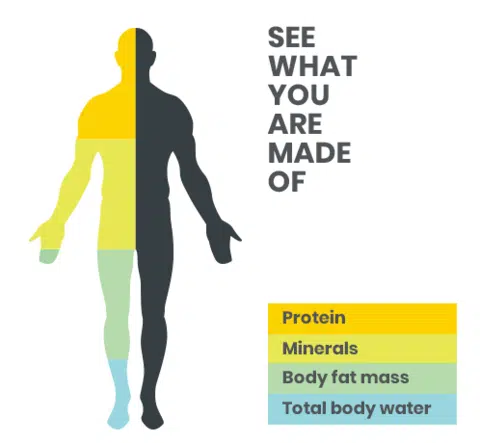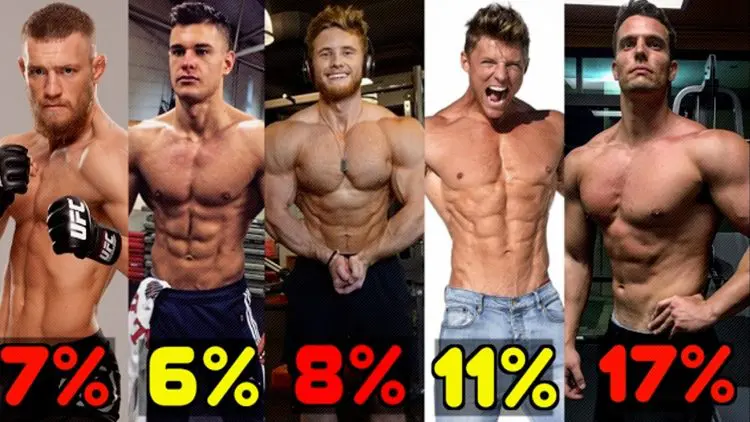According to the Centers for Disease Control, a staggering 75% of American adults are overweight or obese (1). This statistic underscores the widespread pursuit of weight loss through diet and exercise, not just among the overweight population but also among fit individuals striving for lower body fat percentages and increased muscle definition.
While various effective weight loss workouts exist, from High-Intensity Interval Training (HIIT) to bodybuilding, a common question persists: Does sweating significantly impact weight loss? This article delves into the scientific relationship between sweating and weight reduction.
Understanding Body Composition
Your total body mass, as indicated by a scale, comprises several components:
- Muscle tissue
- Bone density
- Organ mass
- Adipose tissue (fat)
- Glycogen reserves
- Undigested food matter
- Stored minerals
- Body fluids

While reducing any component lowers scale weight, fat loss is crucial for improved leanness and health. Body fat percentage (BF%) represents the proportion of body fat to total mass. Achieving fat loss requires creating a calorie deficit through reduced intake and increased energy expenditure, optimally combining diet and exercise.
Notably, while sweating can lead to weight loss, it doesn’t necessarily affect body fat percentage.
Level Up Your Fitness: Join our 💪 strong community in Fitness Volt Newsletter. Get daily inspiration, expert-backed workouts, nutrition tips, the latest in strength sports, and the support you need to reach your goals. Subscribe for free!
Distinguishing Sweat Loss from Fat Loss
Exercise-induced sweating, influenced by environmental factors and genetics, differs fundamentally from fat loss.

Sweating, a thermoregulatory mechanism, releases water to evaporate heat from the skin. Substantial sweating during exercise can lead to temporary weight loss, with one pint of sweat equating to approximately half a pound. However, this loss is quickly reversed upon rehydration.
Contrastingly, fat loss occurs gradually through sustained calorie deficit. One pound of body fat contains roughly 3,500 calories, while an intense hour-long workout typically burns 500-600 calories, equivalent to about 2¼ ounces of fat.
Individual Sweat Rate Variability
Sweat rates vary significantly between individuals due to factors like genetics, fitness level, and acclimatization. Understanding your personal sweat rate can help you develop appropriate hydration strategies for optimal performance and safety.
Understanding Post-Exercise Weight Fluctuations
It’s normal for your weight to fluctuate by 1-3 pounds after a workout due to fluid loss. This variation doesn’t reflect fat loss and typically normalizes within 24 hours with proper rehydration.
Therefore, while sweating induces temporary weight loss, it’s not the sustainable fat loss most individuals seek.
Tip: Utilize our weight loss calculator for personalized guidance.
Potential Risks of Excessive Sweat-Induced Weight Loss
Attempting to lose weight primarily through sweating can lead to several health risks:
1. Cardiac Drift
Excessive sweating without proper hydration leads to blood plasma reduction, causing cardiac drift—increased heart rate at unchanged workout intensity (2). This can prematurely exhaust you, potentially cutting your workout short.
2. Electrolyte Imbalance
Sweat loss depletes essential electrolytes, including sodium, potassium, and magnesium. This imbalance can impair muscle function, cause cramps, and affect heart rhythm.
3. Decreased Exercise Performance
Dehydration from excessive sweating without fluid replacement can significantly reduce workout intensity and duration, diminishing overall calorie burn and fat loss effectiveness.
4. Risk of Hyperthermia
Severe dehydration can lead to exercise-induced hyperthermia (3), a dangerous elevation in core body temperature that can result in serious illness or even fatality.
5. Exercise Discomfort
While sweating is natural during exercise, excessive focus on sweating for weight loss can make workouts unpleasant, potentially discouraging consistent exercise habits.
Legitimate Applications of Sweat-Induced Weight Loss
In specific scenarios, temporary weight loss through sweating can be beneficial:
Athletes in weight-class sports such as boxing, MMA, Olympic weightlifting, and powerlifting may use controlled dehydration to meet weight requirements. However, this practice requires careful management and rapid rehydration to maintain performance.
It’s crucial to note that extreme weight cutting methods, such as diuretics or sauna use, can be dangerous and have led to fatalities (4).
Healthy Sweating Practices
While excessive focus on sweating for weight loss is misguided, normal sweating during exercise is beneficial. It helps regulate body temperature and remove toxins. To support healthy sweating:
• Stay hydrated before, during, and after workouts
• Wear breathable, moisture-wicking clothing
• Allow your body to acclimatize to hot environments gradually
• Listen to your body and avoid overexertion
Conclusion
While sweating can induce temporary weight loss, it does not contribute to sustainable fat reduction. Sweating during exercise indicates calorie burn, but the weight lost is quickly regained upon rehydration.
For effective, long-term fat loss, focus on creating a calorie deficit through balanced nutrition and regular exercise. Stay hydrated during workouts to optimize performance and safety. Unless you’re an athlete preparing for a weigh-in, prioritize gradual, sustainable fat loss over rapid, water-weight fluctuations.
References:
- CDC: Obesity and Overweight https://www.cdc.gov/nchs/fastats/obesity-overweight.htm
- PubMed: Fluid Replacement and Glucose Infusion During Exercise Prevent Cardiovascular Drift https://pubmed.ncbi.nlm.nih.gov/1757323/
- PubMed: Hyperthermia During Exercise – A Double-Edged Sword https://www.ncbi.nlm.nih.gov/pmc/articles/PMC5198803/
- PubMed: The Current State of Weight-Cutting in Combat Sports https://www.ncbi.nlm.nih.gov/pmc/articles/PMC6572325/











